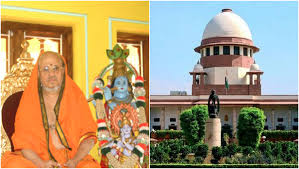In Re: T.N. Godavarman Thirumulpad Vs. Union of India
Background
The T.N. Godavarman Thirumulpad litigation, initiated in 1995, is a landmark environmental case in India that has shaped the country’s forest conservation jurisprudence. The Supreme Court’s orders have consistently expanded the definition of “forest” and imposed stringent requirements for the protection and sustainable management of forest lands, regardless of their legal classification or ownership.
Context of the January 24, 2024 Judgment
The January 24, 2024, judgment addressed appeals related to the criteria for identifying “forest” under the Forest (Conservation) Act, 1980 (FCA). The appeals arose from a National Green Tribunal (NGT) order, which had held that the criteria for forest identification was already under consideration by the Supreme Court in the ongoing Godavarman case, and thus directed parties to approach the Supreme Court for clarification.
Key Issues
What constitutes a “forest” for the purposes of the FCA?
Whether States can set their own criteria for forest identification, or if a uniform, court-mandated standard applies.
Supreme Court’s Reasoning and Directions
The Supreme Court reaffirmed its earlier position that the term “forest” in Section 2(i) of the FCA must be interpreted according to its dictionary meaning, encompassing all statutorily recognized forests, regardless of their classification as reserved, protected, or otherwise. The Court further clarified that “forest land” includes any area recorded as forest in government records, irrespective of ownership.
The Court reiterated its 1996 directive that all States must constitute expert committees to:
Identify areas that qualify as forests by dictionary meaning.
Prepare a comprehensive list of such areas.
Ensure that all forests, including those not officially notified, are protected under the FCA.
The Court also addressed the issue of “deemed forests,” supporting the approach that identification should be based on ecological and cultural significance, not merely the size or extent of the area. The Court cited the example of Rajasthan, where sacred groves (Orans, Dev-vans, Rundhs) are being identified and protected due to their ecological and cultural value.
Significance and Impact
The judgment reinforced that States cannot dilute the Supreme Court’s broad interpretation of “forest.” Any attempt to restrict the definition or exclude certain areas from protection would be contrary to the Court’s orders. The decision ensures that all forests, including those not formally notified but ecologically significant, receive legal protection under the FCA.
The Court’s directions aim to:
Prevent arbitrary de-notification or diversion of forest land.
Safeguard ecologically sensitive areas, including sacred groves and community forests.
Mandate comprehensive mapping and notification of all qualifying areas as forests, using both on-ground and satellite mapping.
Conclusion
The January 24, 2024, judgment in In Re: T.N. Godavarman Thirumulpad vs. Union of India upholds the Supreme Court’s expansive and protective approach to forest conservation. It mandates uniform criteria for forest identification, prioritizes ecological and cultural significance, and requires States to proactively identify and protect all forests, ensuring the continued application of the FCA’s safeguards.






























0 comments